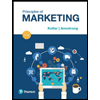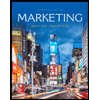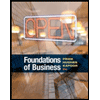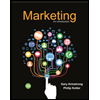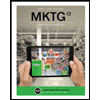Drug companies in the United States are granted a patent on any new pharmaceutical drug they develop, which gives them a monopoly on that drug for 20 years. Not surprisingly, high monopoly profits (i.e., profits well beyond the average rate of profits in other industries) are characteristics of the pharmaceutical industry. In a 2003 study entitled The Other Drug War II, Public Citizen’s Congress Watch noted that during the 1970s and 1980s, drug companies in the Fortune 500 had average profits rates (i.e., as a percent of revenues) that were double the average for all other industries in the Fortune 500. During the 1990s drug company profits rates averaged 4 times the average profits rates of all other industries, and during the first 5 years of the twenty-first century, drug company profit rates were about 3 times the rates of other industries. According to the U.S. Census Bureau’s Quarterly Financial Reports, in the first quarter of 2007 and 2008, average drug company profit rates were about 3 times the average of other manufacturing companies. In the first quarter of 2009, average drug company profit rates were close to 7 times the average for all other manufacturing companies, and in the first quarter of 2010, they averaged close to 3 times the average for other manufacturing companies. Drug companies say they need these profits to cover the costs of research for new drugs. But while drug companies put only 14 percent of their revenues into research, they siphon off 17 percent of their revenues into dividends they hand out to shareholders and plough 31 percent into advertising and administration. A study of drug manufacturing costs (see www.rense.com/general54/preco.htm) found that prescription drugs have markups of 5,000%, 30,000% and 500,000%” over the cost of their ingredients. The ingredients in 100 tablets of Norvasc, which sold for $220, cost 14 cents; of Prozac, which sells for $247,11 cents; of Tenormin, which sells for $140,13 cents; of Xanax, which sells for $136,3 cents, and so on. Source: Velasquez M G, Business Ethics Concepts and Cases 7th Ed. a) What type of market structure is observed in the case study? b) With reference to the case study, what are the ethical weaknesses of the market structures identified in (a)
Drug companies in the United States are granted a patent on any new pharmaceutical drug they develop, which gives them a
According to the U.S. Census Bureau’s Quarterly Financial Reports, in the first quarter of 2007 and 2008, average drug company profit rates were about 3 times the average of other manufacturing companies. In the first quarter of 2009, average drug company profit rates were close to 7 times the average for all other manufacturing companies, and in the first quarter of 2010, they averaged close to 3 times the average for other manufacturing companies. Drug companies say they need these profits to cover the costs of research for new drugs. But while drug companies put only 14 percent of their revenues into research, they siphon off 17 percent of their revenues into dividends they hand out to shareholders and plough 31 percent into advertising and administration. A study of drug
The ingredients in 100 tablets of Norvasc, which sold for $220, cost 14 cents; of Prozac, which sells for $247,11 cents; of Tenormin, which sells for $140,13 cents; of Xanax, which sells for $136,3 cents, and so on.
Source: Velasquez M G,
a) What type of market structure is observed in the case study?
b) With reference to the case study, what are the ethical weaknesses of the market structures identified in (a)
Step by step
Solved in 2 steps

